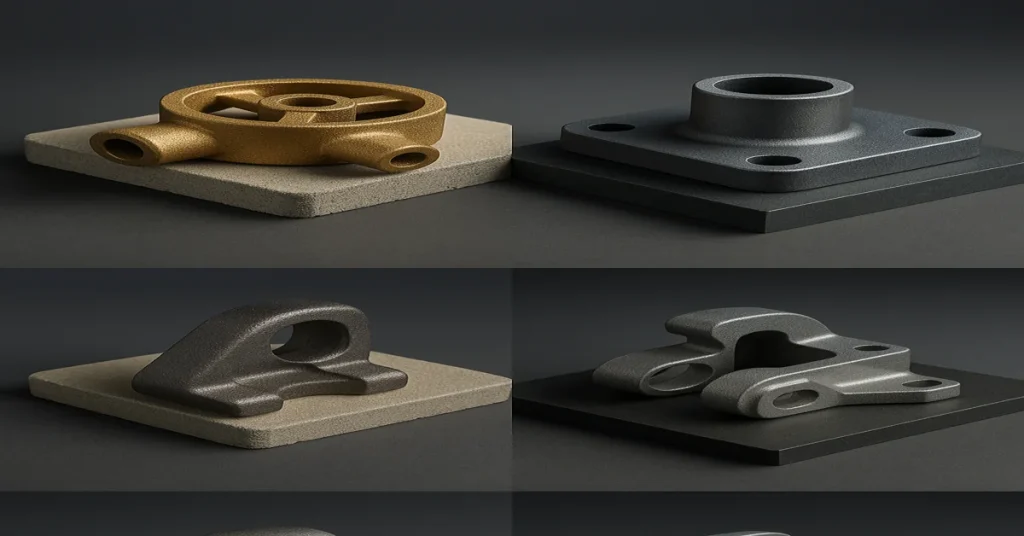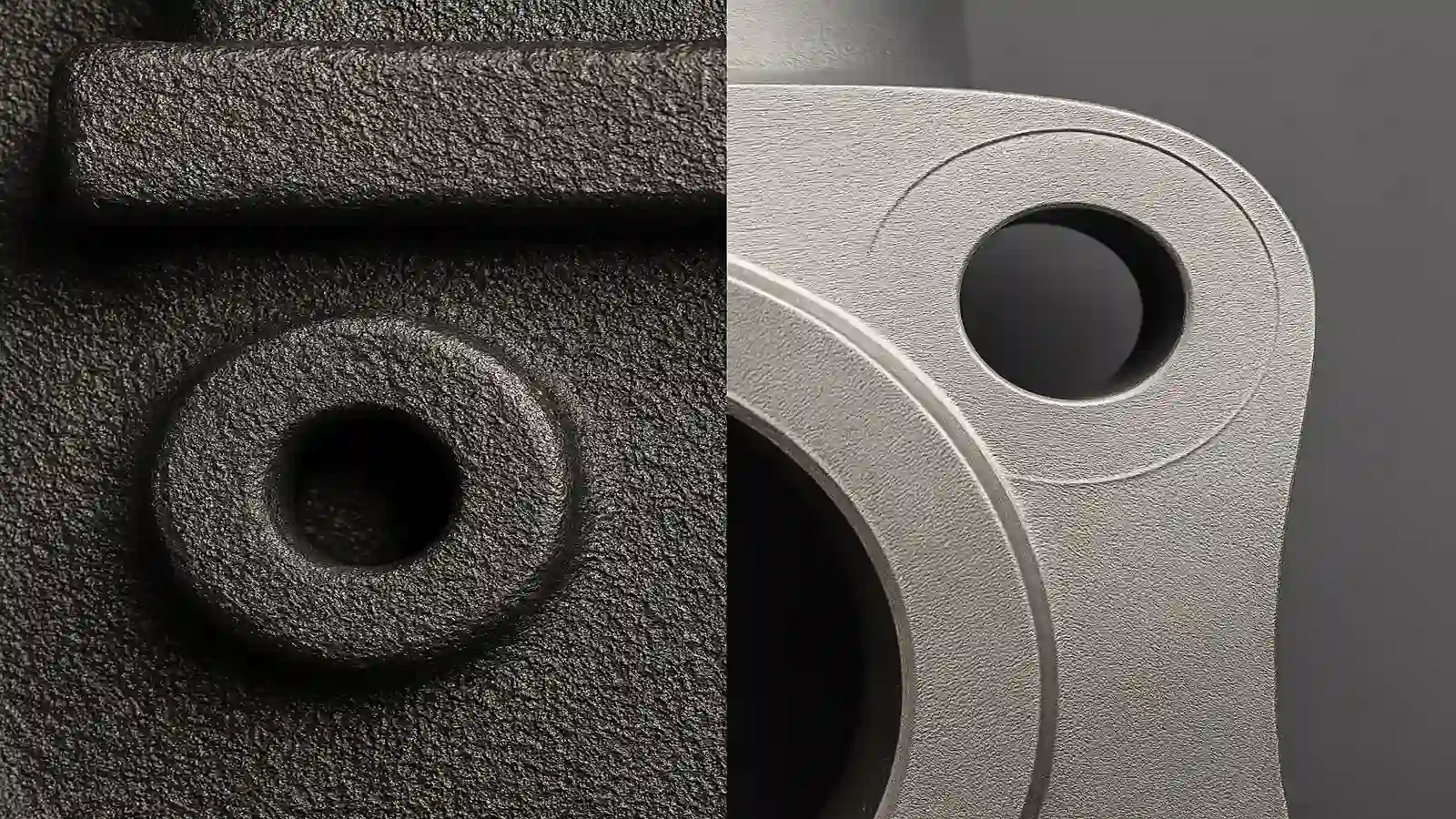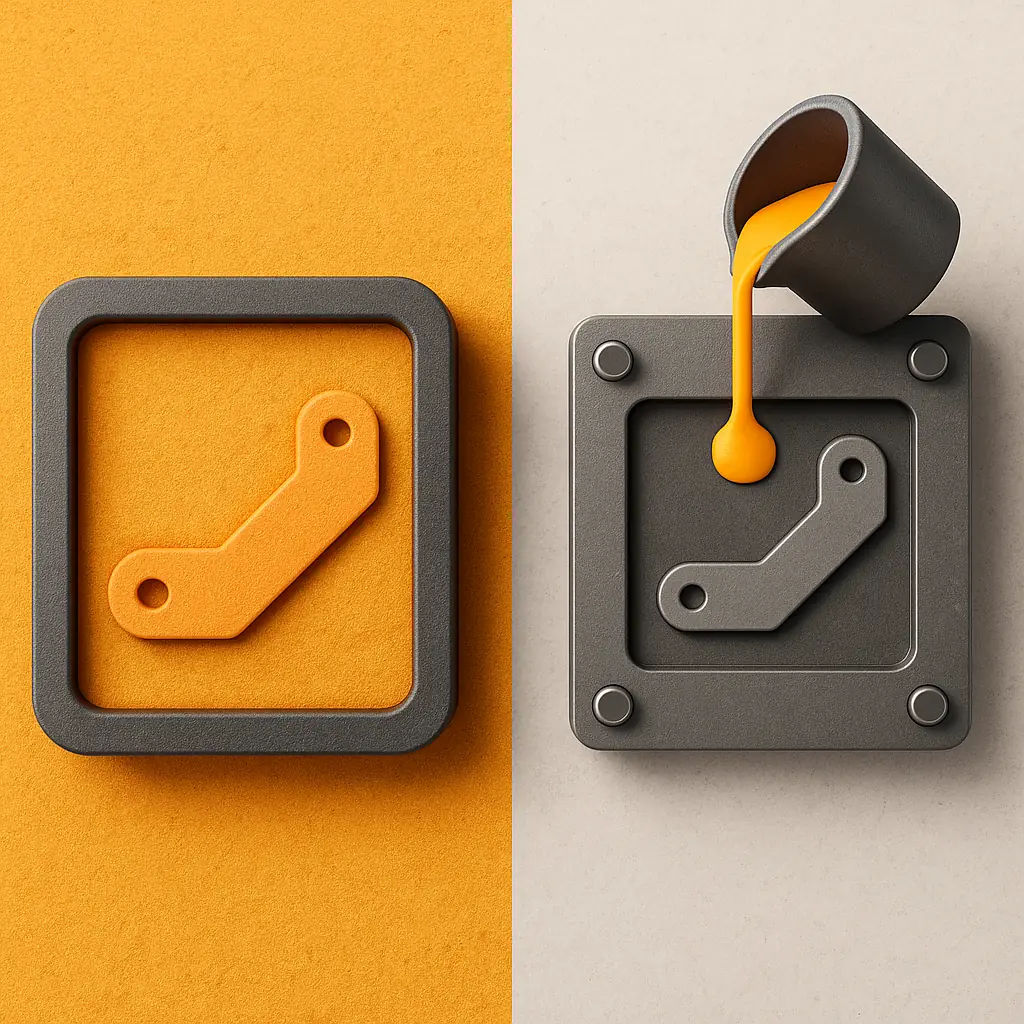Introduction
Note on Terminology:
In this article, “sand casting” refers specifically to a casting process, while terms like “steel casting”, “iron casting”, and “aluminum casting” often refer to both the material used and the associated casting techniques. For simplicity and clarity, we’ll compare these four casting types based on their common industrial usage.
Selecting the right casting process can significantly impact your product quality, cost efficiency, and delivery timelines. With various techniques available — including sand casting, steel casting, iron casting, and aluminum casting — it’s important to understand their differences to make the best decision for your project.
1. Sand Casting
Sand casting is one of the oldest and most adaptable casting processes. It uses sand molds to form parts and is especially cost-effective for large components or small production runs.
Advantages
- Ideal for prototyping and custom jobs
- Works with a wide variety of metals
- Low tooling and mold costs
Limitations
- Lower surface finish and dimensional accuracy
- Requires secondary machining for precision
一般的なアプリケーション
Machine bases, engine blocks, pump housings.
2. Steel Casting
Known for its strength and durability, steel casting is often used in demanding environments like mining, construction, and heavy equipment manufacturing.
Advantages
- Superior mechanical strength
- Excellent resistance to wear and impact
Limitations
- Higher production costs
- Requires tight temperature control and expert handling
一般的なアプリケーション
Valves, gears, structural tools, and custom parts requiring high strength.
3. Iron Casting
Iron casting, particularly ductile and gray iron, offers great wear resistance and vibration damping. It’s a go-to option for high-volume production where strength and cost control are key.
Advantages
- Good fluidity for complex shapes
- Excellent vibration absorption
- Cost-effective for large quantities
Limitations
- Brittle compared to steel
- Lower tensile strength
一般的なアプリケーション
Automotive parts, brake drums, manhole covers.
4. Aluminum Casting
Aluminum casting is prized for its light weight and resistance to corrosion. It’s especially common in the automotive and electronics sectors.
Advantages
- Lightweight, excellent for weight-sensitive parts
- Good thermal and electrical conductivity
- Fast production cycles, especially with die casting
Limitations
- Lower strength than steel or iron
- Not suitable for heavy-load components
一般的なアプリケーション
Brackets, housings, enclosures, and electronic components.
🔍 Comparison Table of Casting Methods
| Casting Method | Cost | Strength | Precision | Best Applications |
|---|---|---|---|---|
| 砂型鋳造 | ★★ | ★★★ | ★ | Prototypes, machine bases, large parts |
| 鋳鋼 | ★ | ★★★★★ | ★★★ | Mining tools, valves, heavy-duty parts |
| Iron Casting | ★★ | ★★★ | ★★ | Auto parts, manhole covers, machine frames |
| アルミニウム鋳造 | ★★★★ | ★★ | ★★★★ | Brackets, electronics, lightweight mechanical parts |
結論
Each casting method has unique advantages depending on your specific needs. For instance, if you’re producing high-strength parts for mining equipment, 鋳鋼 may be the way to go. On the other hand, if weight and corrosion resistance matter most, アルミ鋳造 could be your best fit.
By understanding the properties and limitations of each process, you can better match your casting choice to your product’s technical requirements and production goals.
👉 Learn more about our 鋳鋼, Iron Castingそして アルミニウム鋳造 capabilities.



